
I love using pop-ups. Primarily I’m a boilie angler and often use a blatant pop-up sat two inches above the bottom, even over clean ground in circumstances where, according to popular wisdom, they aren’t the right choice. I am willing to acknowledge however, that there are situations where they aren’t the most effective presentation. One such was on a local water a few of years ago where I’d found three big fish feeding close in. As I couldn’t see the makeup of the bottom, which they’d really clouded up, I dropped a chod on the spot as soon as they vacated. When they returned, a short while later, I watched as they homed in on the handful of 15mm Cell I’d scattered loosely around. My heart boomed and I felt a big rush of adrenaline and then deflation when one spooked off my rig. When the water cleared I could see just how incredibly noticeable my presentation was. A change was required.
The standard choice, in scenarios where something less obvious is required, is to change to a bottom bait. My preference however is to tweak my normal pop-up rig, giving a subtle, low pop-up that retains most of the advantages that pop-up rigs provide without any of the drawbacks that come with having the hook on the lakebed. The low-lying version doesn’t rely on the hook turning to find the bottom lip as the hook is suspended with its point down, creating the maximum chance of finding a purchase. My confidence is stronger when using pop-ups as I believe they produce a significantly higher ratio of pickups to hooked fish ratio. Additionally, I’m never really that comfortable with the hook on the deck where it is vulnerable to being fouled by twigs, leaves, weed and all manner of detritus.
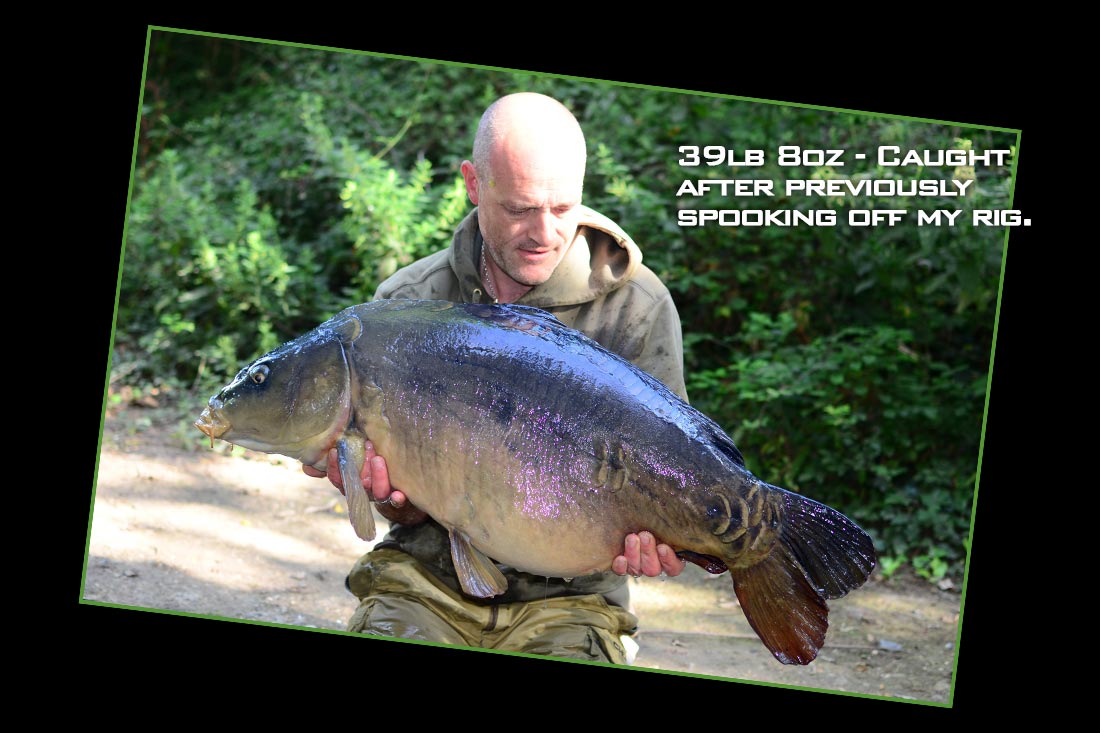
It was a pretty clear spot and classic bottom bait territory so I tied my hinge rig as low as I could making it appear as near as possible to a bottom bait. Once in position, to my eyes it was indistinguishable from a freebie. I was much happier with the revised presentation and my choice was justified the next time the carp returned as the very same fish that had spooked previously was hooked. After charging through a couple of weed beds, the beast was landed and at close to 40lb I felt most satisfied my decision had paid dividends.
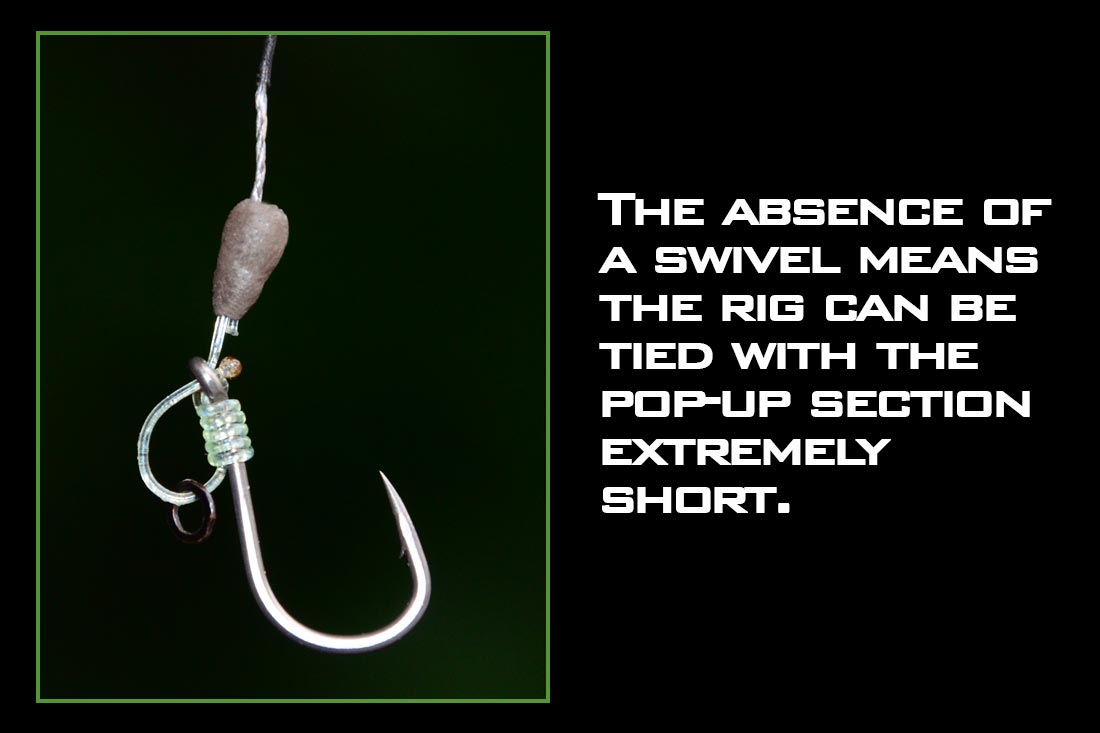
The scenario I’ve described is far from a one off and there are many times when the change from a high to a low-lying pop-up has paid dividends. This can be accomplished in a number of ways with the Ronnie probably the most popular. The 360 rig is another one that sits subtly close to the bottom as can the multi-rig if tied with the shortest possible loop. My pop-up rig is a well proven variation of the hinge rig, which I’ve been using for approaching 20 years. The absence of the customary swivel makes it versatile in that it can be tied with the stiff end section as long or as short as required. I can use it for my high, obvious pop-ups as well as super low, subtle ones and anything in between.
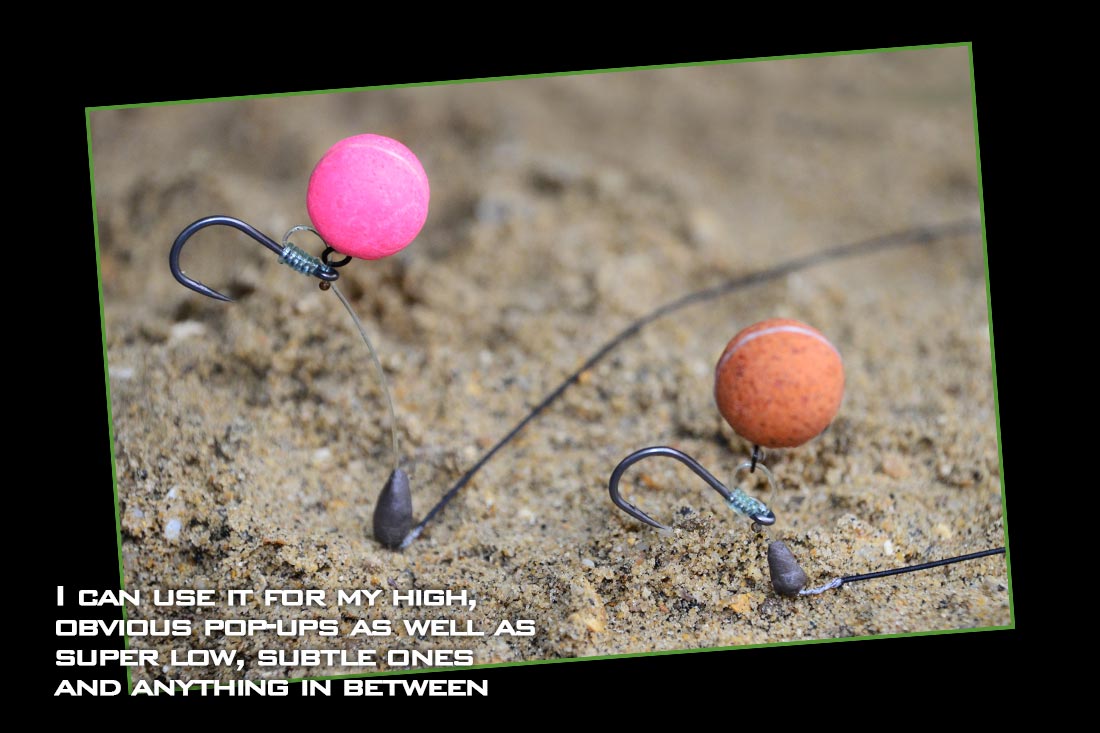
Rather than have a supply of complete, ready tied rigs on hand I find it handy to keep a few of the stiff end sections tied up in advance and then assemble the boom according to the demands of the situation. The makeup of the lake bed is one of the governing factors as the characteristics of the rig can be altered by utilising various materials. The only constraint on the boom is that it must be made from some form of braided material meaning that a variety of flexibility can be employed. Mainly I use a soft coated braid for the boom, which is suited to the greatest variety of lake beds, with either Ultra Skin or Ultra Sink doing the job nicely. It can be tied with uncoated braid for fishing on very choddy ground and for clean firm substrate a change to a stiffer material such as Stiff Ultra Skin can make a big difference.
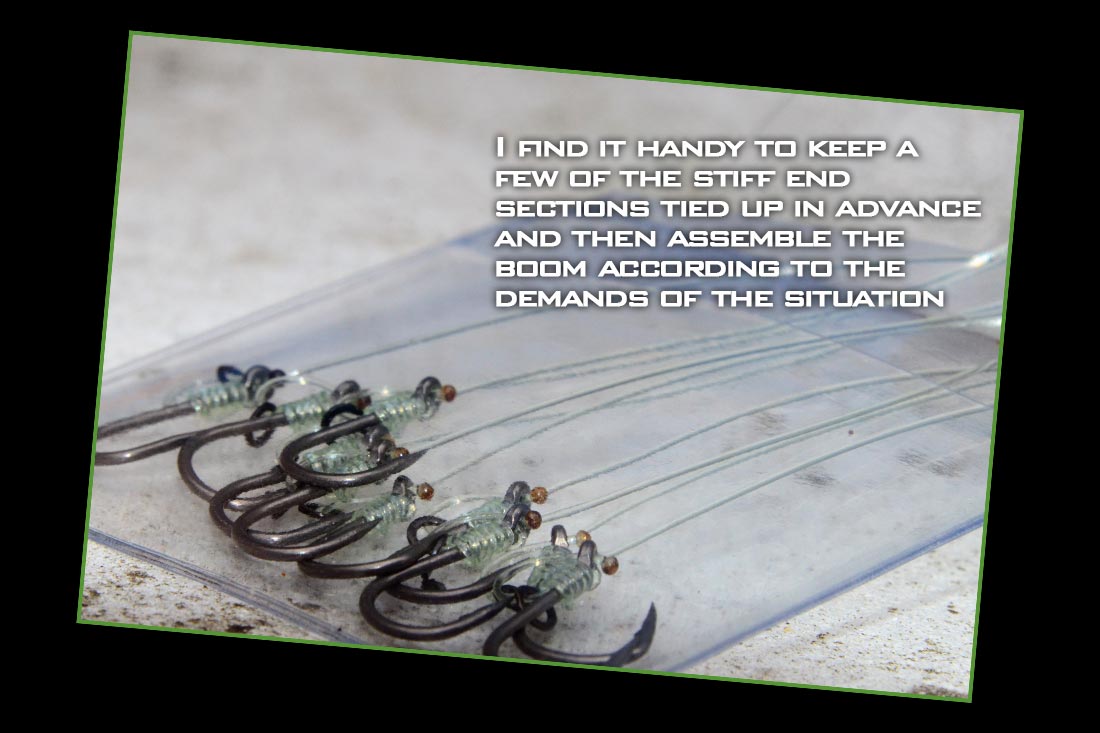
Pressured carp can be very adept at ejecting rigs and swapping over to a stiff boom has made the difference when fish have been getting away with it. I’m sure the rigid boom makes for the most effective and difficult to deal with version although, to ensure it sits well, you’ll need to fish it on clear areas and only on a helicopter set up whereas, a softer boom is fine with a lead clip or inline arrangement.
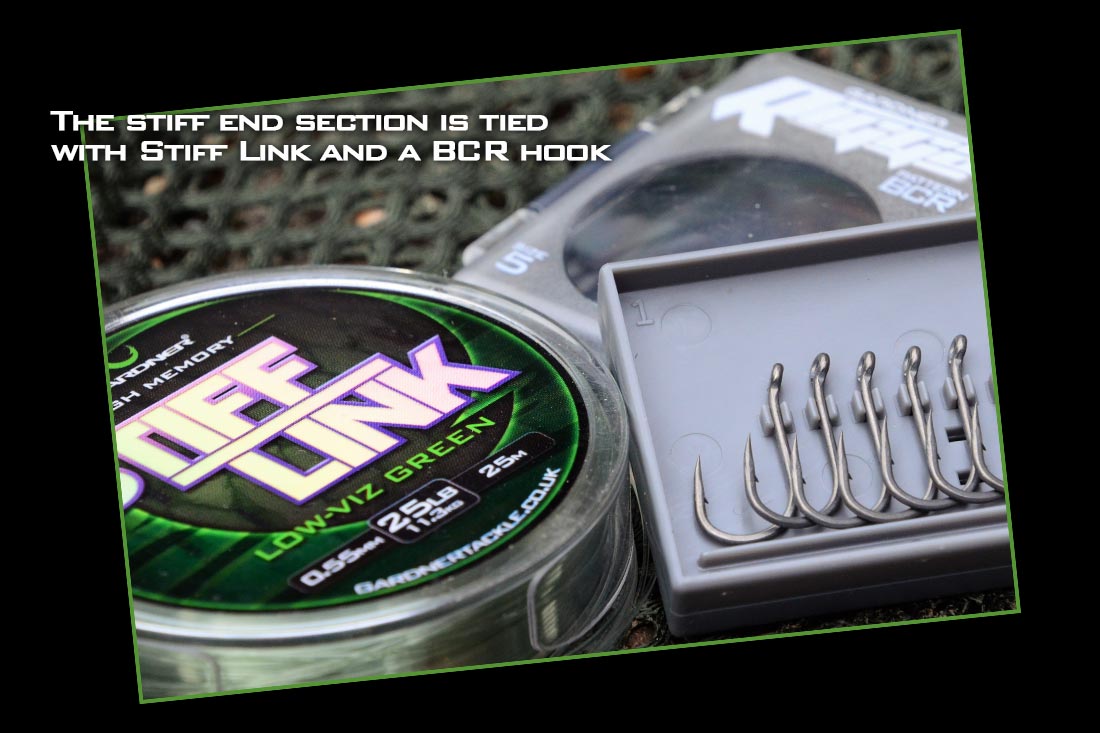
Obviously there are occasions, such as mass baiting, bits and pieces edge traps or when fishing heavily stocked venues where a bait hard on the deck is best but, for boilie fishing when a subtle approach is called for, my first port of call is to try a low pop-up. One of the main decisions we make every session is whether to use a pop-up or a bottom bait, weighing up the advantages of both. A lot of the time though, something between the two is my choice because it is possible to have the best of both worlds.
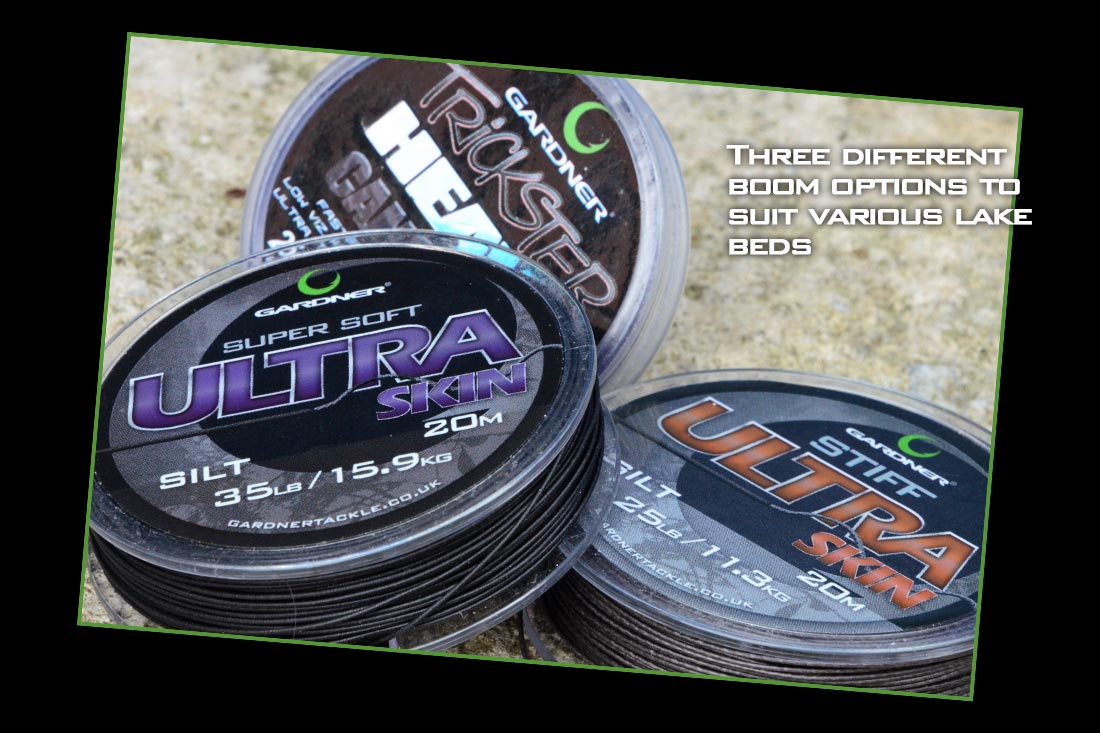




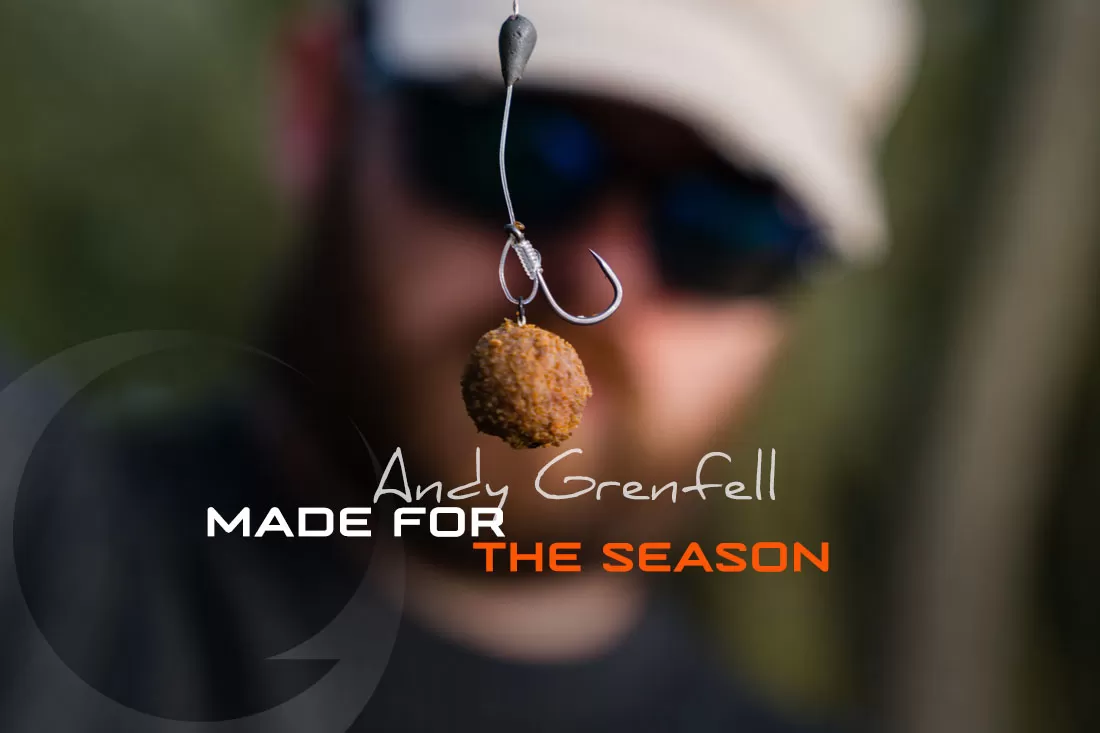
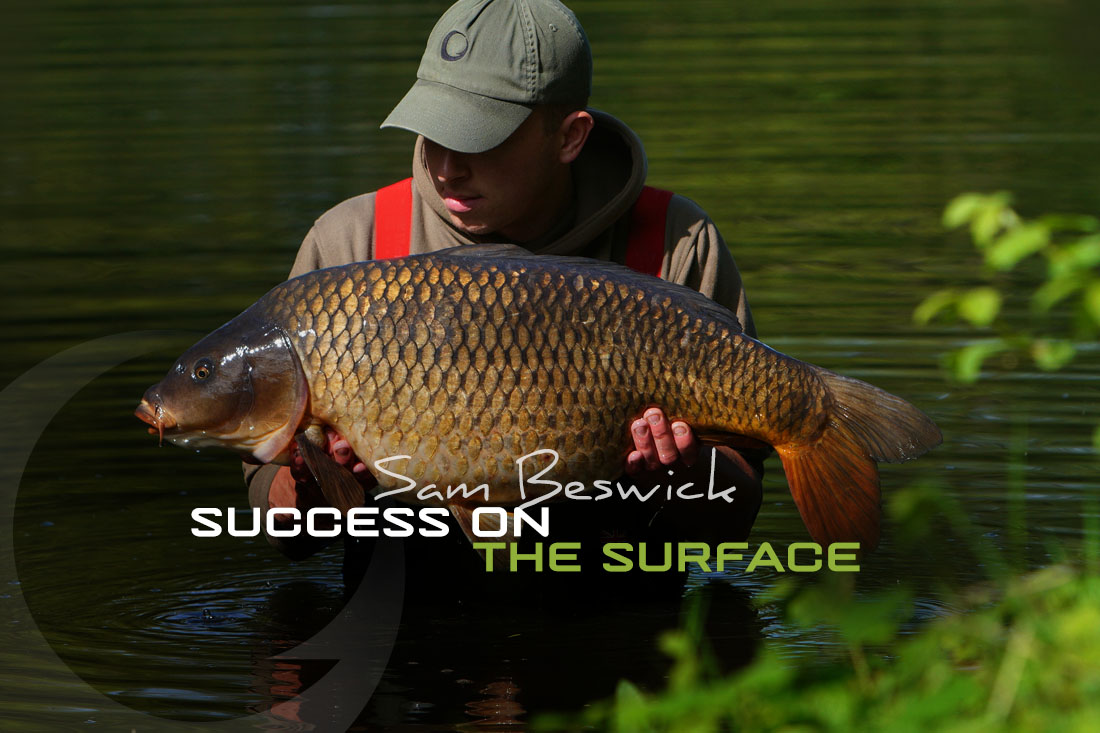

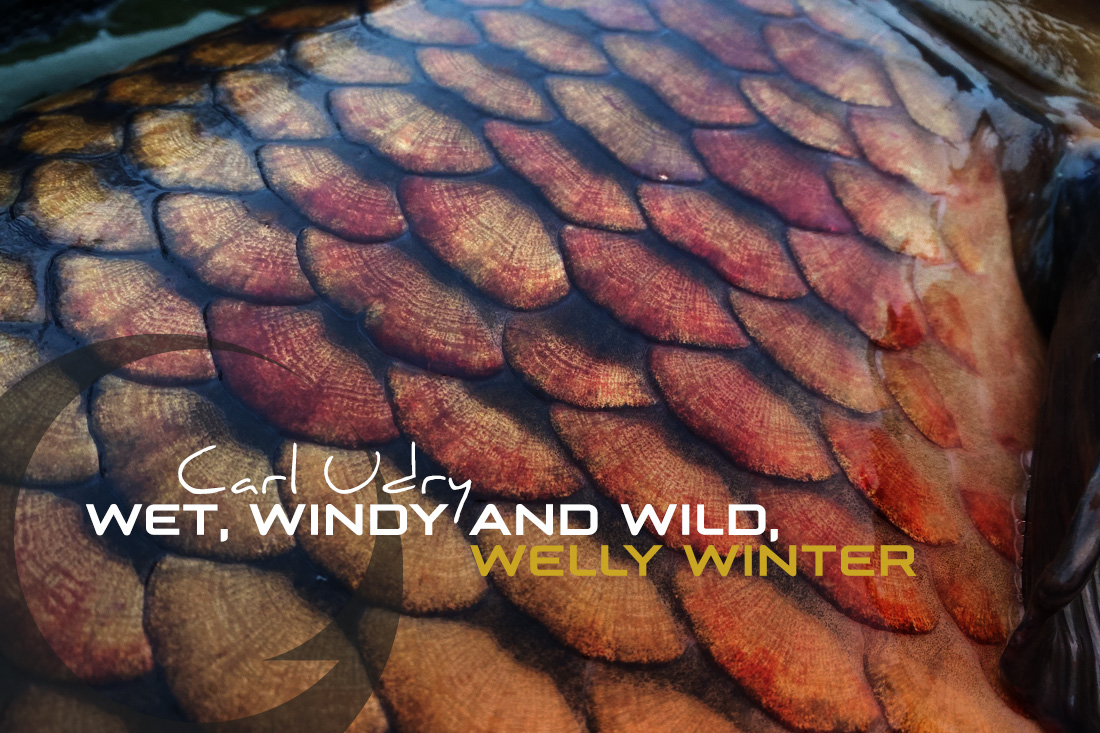
Leave A Comment
You must be logged in to post a comment.